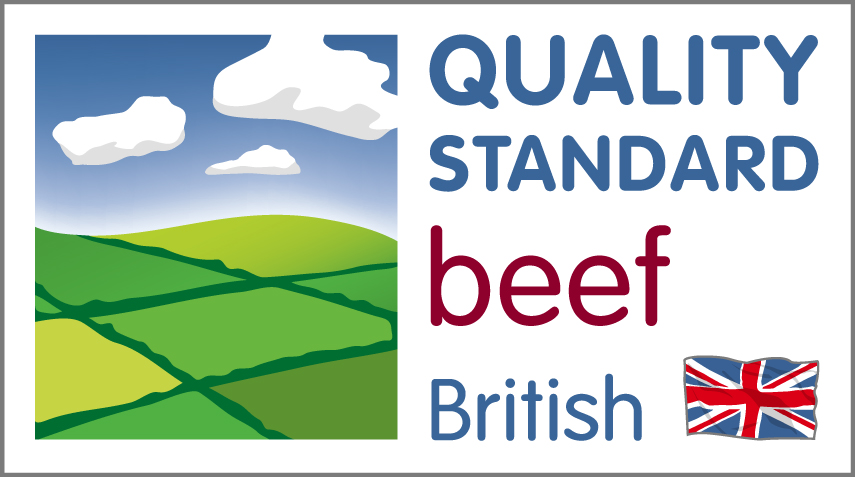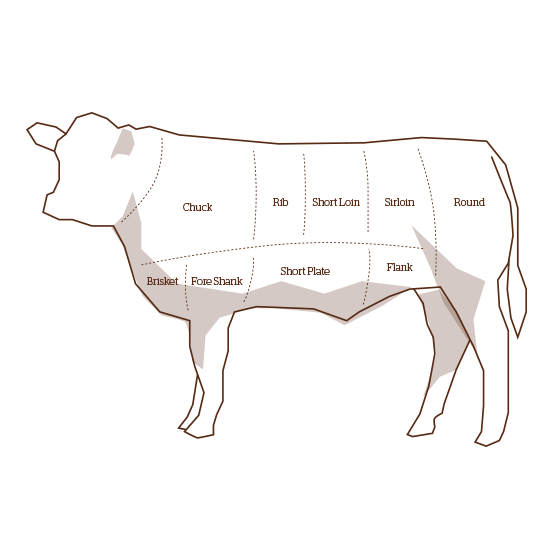Using Beef in Indian Cooking
The use of beef in Indian cooking is fairly limited. And due to religious reasons there are many regions of India where it is actually illegal to eat beef. Being Sikh which stems from Hinduism eating beef in my home was forbidden. I have never booked a curry with beef and I don't give it to my children either just because that's they way I was brought up. I think it's important to remember that there are many areas in India where beef is consumed and they have their own unique way of cooking it which I will explore.
If you do prefer eating beef then remember its quite t is quite straightforward to substitute lamb for beef. Ideally, use topside or rump for slow cooked dishes and cook them for slightly longer then you would for lamb (approx. 1.5 hours). Minced beef can also be used for Keema and kebab dishes.
Once slaughtered the meat needs to be hung for at least two weeks which gives the beef time to mature, technically it gives the bacteria and enzymes times to start to breaking down the meat fibres. This tenderises the meat, darkens it in colour and gives it time to develop a deeper flavour. During this process the meat also loses a significant amount of liquid or moisture which prepares it for cooking.
Buying Beef
- Always buy your meat from a source you trust, a good butcher is worth their weight in gold. Ask them how long the meat is hung for too.
- Beef should have streaks of white fat running through it - this is called marbling. The meat cooks and bastes itself in the fat while it is cooking.
- Look for a piece of meat with a layer of creamy-white fat around the outside as well. This can be a sure sign that the meat has come from a properly reared animal that has been well looked after. This fat also adds flavour whilst the meat is cooking. You can always cut this off or drain the fat away if you don't want to serve it but ensure its there during cooking.
- Go for meat that is deep a dark red colour.
- Beef that is of a decent quality which has been hung properly will have slightly sticky touch that and yields to the touch.
For an eating quality guarantee look for butchers stocking Quality Standard Mark (QSM) Beef and Lamb. Tough Standards – Tender Results
To find a QSM butcher in your area you can enter your postcode here: Local QSM Butchers

Beef Cuts
Beef is divided into four there area two forequarters and two hindquarters.
The Forequarter
This goes from the neck to the last rib bone. The part of the cow has had to work hardest, so the cuts are less tender. For this reason they have to be cooked by slower methods such as stewing, braising, and pot-roasting.
- Neck is used to make a high quality of beef mince for slow cooking.
- Ribs tend to be separated into three sections:
- Chuck and blade comes from the first two ribs and is usually used for braising.
- Middle ribs are more fatty so they tend to be boned and rolled into a joint. These are ideal for slow cooking or braising.
- Fore ribs are considered one of the prime cuts for roasting on the bone. This is also where rib-eye steaks come from.
- Brisket is a belly region that's boned and rolled for pot-roasting.
- Shin is perfect for stews.
The Hindquarter
This is the back end of the animal and are better for quick cooking or roasting because they are more tender.
- Sirloin can be cut to a joint or sliced across into steaks. When cut in a particular way with the fillet remaining this is where the T-bone and porterhouse steaks come from too.
- The fillet can be rolled into a joint or sliced into steaks that a lean and tender. They are expensive but I think they have slightly less flavour then a rump.
- The flank is trimmed and used for cheaper mince beef.
- The skirt skirt refers to various muscles near it is very lean but is tough so you have to cook it slowly for a long time. It has a great flavour.
- Rump is a very lean, tender cut that is always sliced into steaks.
- Topside is a large, lean cut of beef, that is rolled and divided into two or three boneless joints.
- Silverside is used for slow cooking as well as making corned beef.
- Top rump or thick flank is a lean cut that is great for roasting, or can be thinly sliced as an cheaper frying steak.
- Leg is the top of the back leg, which is usually sliced and has similar qualities to shin. Best suited to slow methods of cooking. You may need to add moisture to the dish.
The use of beef in Indian cooking is fairly limited. However, it is quite straight forward to substitute lamb dishes with beef. Ideally use topside or rump for slow cooked dishes and cook them for slightly longer then you would for lamb (approx. 1.5 hours). Minced beef can also be used for Keema and kebab dishes.
Back to Cooking guides

Comments